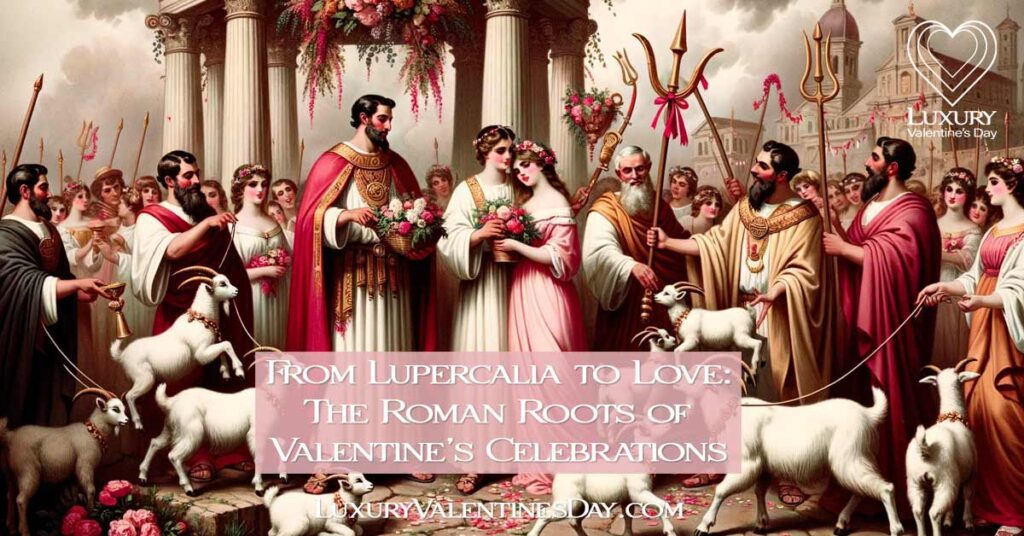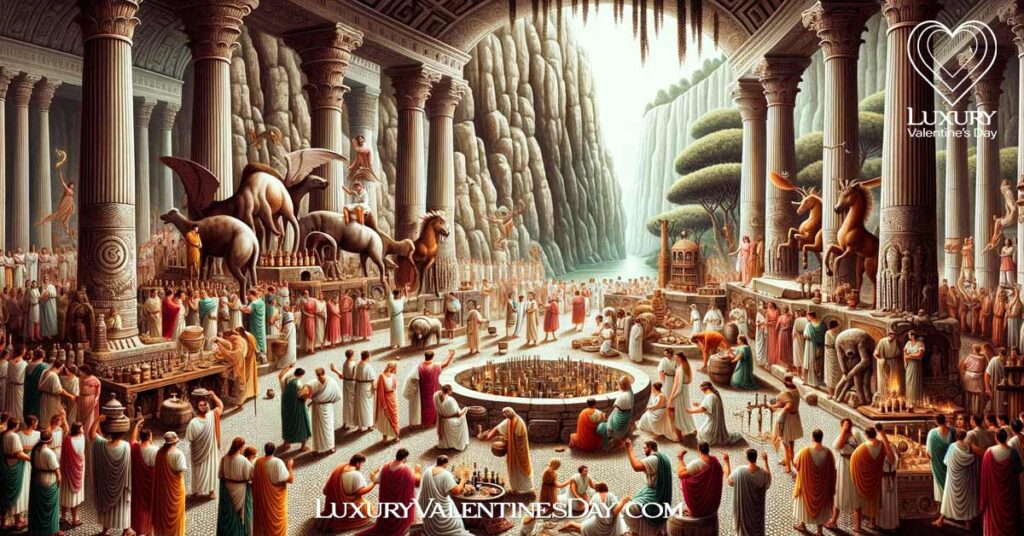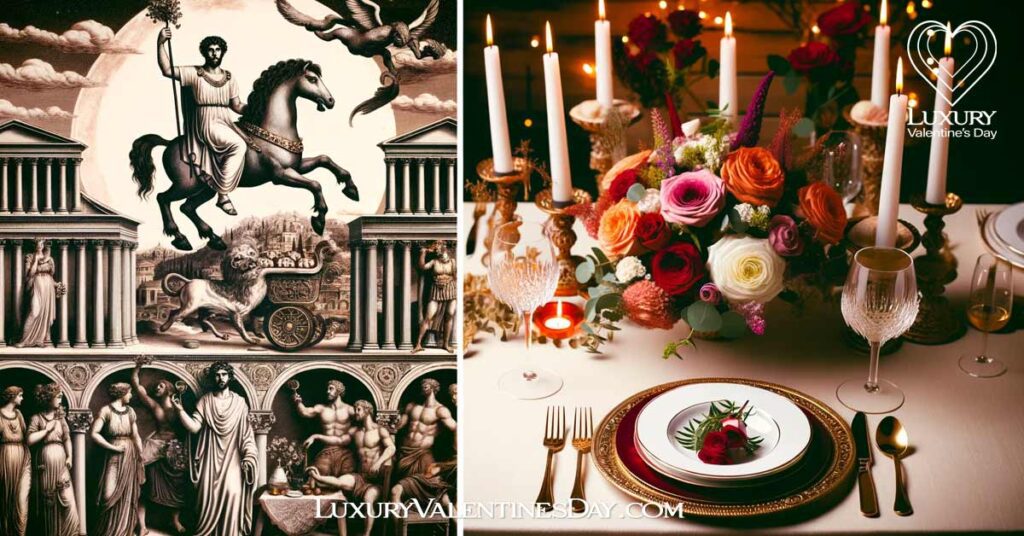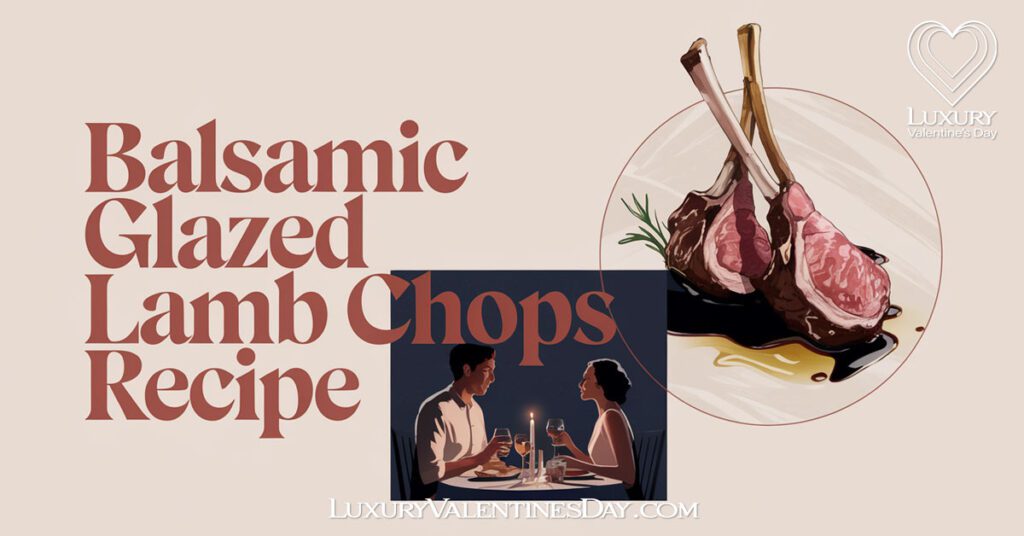
Table of Contents
ToggleFrom Pagan Origns to Love: The Roman Roots of Valentine’s Celebrations
Valentine’s Day, a day synonymous with love and romance, is a celebration cherished by lovers around the world. Yet, its origins are deeply rooted in the annals of history, stretching back to ancient Rome. In this exploration of Valentine’s Day’s rich history, we delve into the captivating journey from Lupercalia, a pagan festival, to Love, unearthing the essence of this holiday that is so integral to our modern lives.
As we navigate this historical journey, it’s essential to understand that our perspective is distinctly upscale. We are not merely exploring the origins of Valentine’s Day; we are embracing the luxurious facets that make this celebration an opulent and unforgettable experience for couples seeking nothing but the best.
For those who frequent our website, “Luxury Valentine’s Day,” the quest is simple: to enhance your understanding of this cherished holiday while offering a distinctive touch of elegance and luxury. In this article, we paint a vivid picture of Valentine’s Day’s roots, tracing its lineage back to the Roman, pagan festival of Lupercalia. And as we do so, we will keep in mind the lavish sensibilities of our readers, who seek to craft a Valentine’s Day that is unparalleled in its grandeur and sophistication.
Valentine’s Day is not just a date on the calendar; it’s an opportunity to create timeless memories, and our aim is to reveal how its ancient origins can lend a touch of sophistication to your celebrations. So, let’s embark on this journey from the pagan festival of Lupercalia to Love, drawing inspiration from the past to elevate your modern Valentine’s Day experience.
The Ancient Roman Festival of Lupercalia

To comprehend the roots of Valentine’s Day, we must travel back in time to the heart of the Roman Empire, where the ancient festival of Lupercalia took center stage. Lupercalia was a pagan celebration that paid homage to the Roman god Faunus and the nurturing wolf that famously nurtured the founders of Rome, Romulus and Remus. This festival, observed every year from February 13th to 15th, was a unique and spirited affair that held great significance in Romans and Valentine’s Day history.
Origins and Significance of Lupercalia
Lupercalia, a festival steeped in history, symbolized the arrival of spring and the imminent end of winter’s chill. It was a time when Romans rejoiced in the rejuvenation of nature, fertility, and, fittingly, love. The festival’s name itself is believed to have been derived from the Latin word “lupus,” meaning “wolf.” This is due to the mythological connection between the she-wolf that nurtured Rome’s founders and the god Faunus, often associated with both the wild and fertility.
Lupercalia Customs and Pagan Traditions
Lupercalia was far from a conventional celebration. The festival began with a ceremony at the Lupercal cave on Palatine Hill, where priests, known as Luperci, donned goatskin loincloths. The goatskin, symbolizing fertility and virility, was central to the festival’s rituals.
The main event of Lupercalia involved the Luperci running through the streets of Rome, striking people with strips of goatskin known as “februa.” These strikes were believed to cleanse and purify those touched, warding off evil spirits and infertility while ensuring fertility and good fortune. It was a celebration filled with boisterous laughter and playful rituals, reflecting the joy and anticipation of spring and renewed life. This was a key part of Romans and Valentine’s Day traditions.
Love Lotteries and Unconventional Pairings
One of the most intriguing aspects of Lupercalia was its “love lottery.” During the festival, young men and women placed their names into an urn, and then, in a random drawing, were paired together as couples for the duration of the festival. This somewhat unconventional matchmaking ritual often led to unexpected pairings and ignited the flames of new, temporary romances. This was a unique aspect of Romans and Valentine’s Day celebration.
Lupercalia was, in essence, a celebration of love and fertility, and it mirrored the Roman belief in the rejuvenating power of nature. As Romans basked in the festivities and romantic adventures, they couldn’t have known that the legacy of Lupercalia would evolve into something as cherished and timeless as modern Valentine’s Day.
Examples from Roman Times
Historical records and accounts of Lupercalia have been unearthed through various sources, such as ancient writings and inscriptions. These include descriptions by the likes of Plutarch, Ovid, and Pliny the Elder, who provide valuable insights into how the Romans celebrated this unique festival.
The remnants of Lupercalia’s presence in ancient Rome can still be seen in the archeological findings, such as the Lupercal cave itself, as well as various inscriptions that mention the festival. These tangible links to the past allow us to connect with the Romans of yore and their colorful traditions.
In essence, Lupercalia was the dawn of what would eventually become Valentine’s Day, with its focus on love, romance, and the uplifting spirit of new beginnings. As we explore this Roman festival further, we begin to understand how it laid the foundation for the romantic holiday we celebrate today.
Lupercalia’s Influence on Valentine’s Day

To truly grasp the evolution of Valentine’s Day, we must recognize the significant influence that the ancient Roman festival of Lupercalia had on the modern celebration of love. The transition from Lupercalia to Valentine’s Day is a fascinating journey that illuminates the enduring power of traditions.
Early Christian Adaptation
As the Roman Empire gradually embraced Christianity, the Church sought to Christianize existing pagan celebrations rather than abolish them outright. Lupercalia was one such festival that underwent transformation. In the late 5th century, Pope Gelasius I replaced Lupercalia with a Christian feast day known as Saint Valentine’s Day, celebrated on February 14th.
The choice of this date was strategic. It coincided with Lupercalia and also had ties to the Christian martyr named Valentine – who became St. Valentine, who was associated with love and compassion. This transition allowed the Church to divert the focus of the festival from pagan rituals to the celebration of love within a Christian context.
The Traditions that Persisted
While Lupercalia was no longer officially celebrated, its romantic customs endured. The act of pairing young men and women during Lupercalia’s love lotteries evolved into the exchange of handwritten notes and love tokens that we associate with Valentine’s Day cards and gifts today. This transition demonstrated a seamless adaptation of the old traditions into new ones that resonated with Christian values.
The Poetic Touch of Chaucer
Although Valentine’s Day had taken a Christian form, it wasn’t until the Middle Ages that it truly blossomed into a romantic celebration. Geoffrey Chaucer, the English poet known for his timeless work, “The Canterbury Tales,” played a pivotal role in romanticizing the holiday.
Chaucer’s poem, “Parliament of Fowls,” written in the 14th century, includes the first known association between February 14th and love. Chaucer’s lines described how birds, traditionally symbols of love, came together to choose their mates on this day. This literary connection added a layer of poetic romance to Valentine’s Day that endures to this day.
The Legacy Continues
With time, Valentine’s Day embraced more traditions, including the exchange of love letters, tokens of affection, and, eventually, romantic dinners and getaways. These customs, born from the amalgamation of Lupercalia’s ancient rituals, Christian influence, and poetic inspiration, paved the way for the modern celebration of love.
Today, couples around the world commemorate Valentine’s Day with expressions of affection and devotion. The essence of this romantic holiday, rooted in the depths of history of Valentine, continues to connect people and kindle the flames of love. Whether through the giving of roses, handwritten love notes, or extravagant surprises, the legacy of Lupercalia persists in the extravagant celebrations of Valentine’s Day.
In tracing the journey from Lupercalia to Love, we recognize that the allure of ancient traditions has not faded. Instead, it has been molded and enhanced to suit the evolving tastes of an upscale audience seeking a Valentine’s Day experience that is both rich in history and luxurious in its expression of love.
Related Posts
- Date Ideas That Start with U: Unique and Unforgettable Dates
- Dating Quotes Cute Enough to Make Your Heart Flutter
- Butternut Squash Ravioli with Sage Butter: A Perfect Romantic Dinner for Two
- Alphabet Date Ideas: A to Z Guide for Creative Couples
- Valentine’s Day Bathroom Décor Ideas: Transform Your Space into a Romantic Haven
- Date Ideas That Start with J: Joyful and Jazzy Dates













